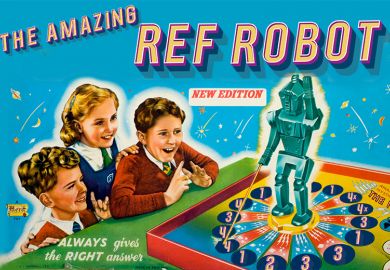A student once gleefully informed me that some of his friends had celebrated the end of their compulsory literary theory module by burning their much-hated course books. These were mostly intelligent young people, and I did not believe they had all been brainwashed by the notion that literary theory was a Franco-German conspiracy to corrupt robust Anglo-American morals. For the rest of the term, I had the pleasure of discussing with the book-burners what exactly was it about theory, and literature itself, that elicited such visceral reactions. This is also the question Rita Felski uses in The Uses of Literature as the launching point of what she calls a "yes-saying" literary manifesto. If theory "simply is the process of reflecting on the underlying frameworks, principles, and assumptions that shape our act of interpretation", how do we explain the blood-splattered field of the theory wars?
Unsurprisingly, Felski finds that it is the structural elitism of the literary critics that has given theory its bad name. We are caught between those who hold a theological view of the uniqueness of literature and those who maintain that literature always unknowingly transmits dominant ideological norms. But both schools agree that it is the critic alone who can interpret the full range of literary meanings by adopting poses of "analytical detachment, critical vigilance, guarded suspicion". Felski wants to find an "ordinary" theory of literature and culture that would replace these hermeneutics of suspicion.
Her strategy is to outline a theory of literature based on four modes of human interaction - recognition, enchantment, knowledge and shock. She devotes a chapter to each, marshalling a wide range of texts to illustrate her approach. Inevitably, some chapters work better than others. The one on "recognition" is convincing, as she shows how literary techniques such as focalisation, points of view, narrative structures, characterisation and descriptions lead to a sense of identification ("self-intensification") and an acknowledgement of commonality in difference ("self-extension"). Thus, literature gives us, simultaneously, the possibilities of knowing and the limits to knowing. It neither, as Felski accuses Althusserians of suggesting, makes good subjects of readers by encouraging misrecognition, nor seeks to colonise all "differences" into (Euro-)normativity.
In the absence of such attention to the mechanics of literary style, other chapters are less effective. Felski makes much play of the sense of wonder evoked by the magical radiance of novels, but does not show which literary properties evoke such feelings. Similarly, apart from some discussion of literature's obsession with descriptions of suffering, she does not explain the formal properties that enable literature to impart the "shock of the old and the familiar" across time and space.
By its nature, a manifesto demands targets. But more than a few of Felski's targets are men of straw. Fredric Jameson, for example, is accused of suggesting that late modernity has robbed all kinds of literature of their shock value, when in reality his remarks were part of an analysis of the incorporation of modernist avant-garde. Felski calls her method a blend of the historicist and the phenomenological and contrasts it with totalising systemic cultural theories such as Marxism. Yet the scholarship of people such as Fredric Jameson or Roberto Schwarz shows that systematic theoretical investigation need not ignore the affective pluralities that Felski rightly values.
Felski's manifesto is timely but, before I use it in my arguments with my incendiary students, it needs a bit of fine tuning.
Uses of Literature
By Rita Felski
Wiley-Blackwell
160pp, £50.00 and £16.99
ISBN 9781405147231 and 47248
Published 15 May 2008
Register to continue
Why register?
- Registration is free and only takes a moment
- Once registered, you can read 3 articles a month
- Sign up for our newsletter
Subscribe
Or subscribe for unlimited access to:
- Unlimited access to news, views, insights & reviews
- Digital editions
- Digital access to THE’s university and college rankings analysis
Already registered or a current subscriber?



